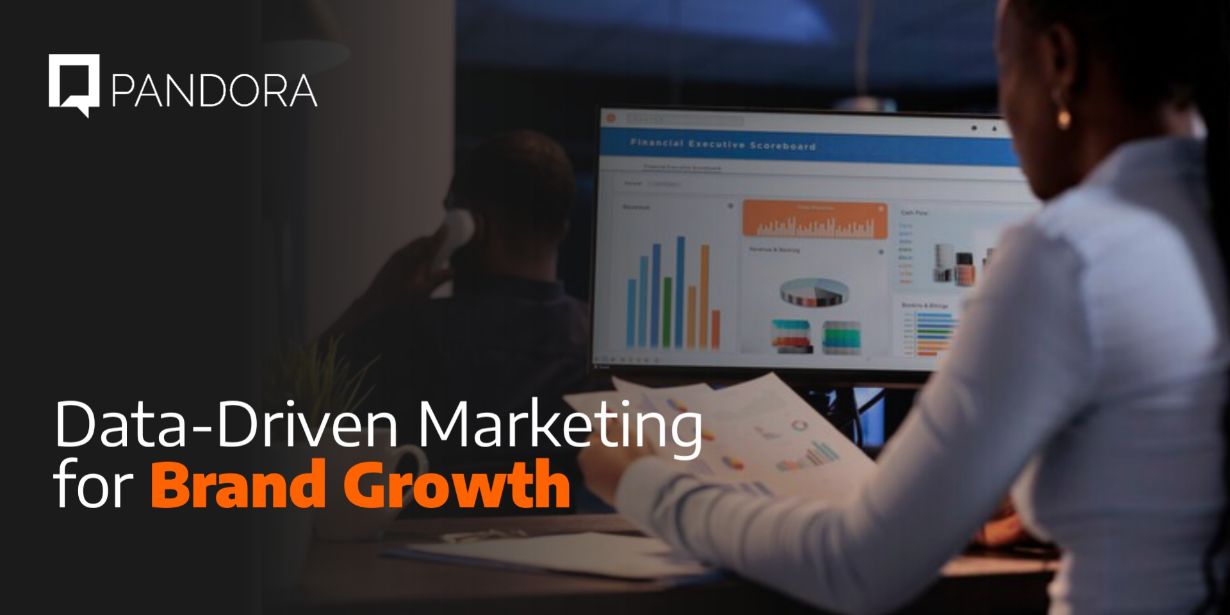You might be the world’s most certified marketing professional but your organization will suffer huge consequences if you lack data-driven marketing insights.
While the job of a marketer is to promote a brand’s products and services, the importance of market research and data analysis cannot be overlooked. The 21st century marketing is no more based on assumptions or gut feeling.
According to a Forbes report, companies who adopt data-driven marketing are six times more likely to be profitable year-over-year than companies who don’t.
Data-driven marketing insights will help you avoid roadblocks that can threaten business viability. A 2021 stat from Small Business Administration says only 48.9% of businesses survive within the first 5 years, meaning about 50% fail.
The way out is to arm yourself with the best data driven marketing knowledge and tricks so you can avoid being just another statistics. That’s what we’re all about here!
So What is Data-Driven Marketing?
Data driven marketing is when marketing strategies are created based on data and analytical insights. It is used to secure useful customer behavioral and demographic information and tailor marketing strategies that drive results.
If you’ve ever shopped at Jumia for example, you have probably received a product recommendation while visiting their website or through email. That is an example of a data-driven marketing effort. Data-based marketing is driving the future of the modern way of doing business and every marketer should know how to execute it.
5 Data Driven Marketing Insights Every Marketer Should Have
1. Focus on Customer Data
Customer data is the personal information of buyers collected by businesses and marketing companies. It includes the demographic and behavioral information of the customers which helps a business to effectively understand, communicate, and engage with buyers.
A McKinsey survey reveals that businesses that work with customer information are 23 times more likely to acquire customers, 6 times more likely to retain customers, and 19 times more likely to be profitable.
As a marketer, how do you get customer data and what should you do with it?
Your first step is to research and create your ideal customer/audience persona. This is where you may need to adopt some research tools including, interviews, survey questionnaires, literature databases, collaboration platforms, Google Trends and Google Analytics. Your goal should be to create an effective buyer segmentation and profiling as well as carry out effective competitor analysis.
Even ecommerce platforms understand the importance of data-driven marketing and are providing tools to make it easier for their users. For example, Jumia’s Robotdorm helps sellers access millions of product insights available on the Jumia marketplace. With this research tool, brands can make data-driven decisions by leveraging current sellers’ metrics and product data to make their next winning moves.
Even if you work in a small business with a low marketing budget, you can always explore some of the research tools we mentioned earlier to gain customer data and insight.
2. Design Strategies to Solve Your Customers Needs
The goal of every business is to satisfy consumer demand and increase its market share. However, for the above goal to be successfully realized, you need to understand what your customers need and develop strategies to solve those needs.
Here are two strategies that can help you achieve that:
- First, be ready to listen to your customers’ feedback and let them know that their opinion is appreciated. Statistics show that 83% of customers agree that they feel more loyal to brands that respond and resolve their complaints. Whether it’s in-person, via social media, or email, this is one good way to differentiate yourself from your competitors.
- Next, interact with your customers. Every interaction with a customer should be a chance to connect with them, make them feel appreciated, and increase their retention and advocacy.
The 21st century consumers are technology-oriented and do not want to be treated as standard consumers. They want the product to be available when they need it. Customers desire a sense of gratitude and empathy from you and at the same time expect you to be creative in your business delivery process.
3. Personalize Your Marketing Offer
The first step to personalize a marketing offer is to analyze what you know about your current customers. For example, here at Pandora Agency, we explore the existing organizational knowledge or current customer base of our clients. This helps us identify who their customers are and what they are interested in. With this we come up with a testable hypothesis.
The next step of personalization we execute is working on new insights gotten from interviews, customer surveys, focus groups, and other research activities. Sometimes we discover, for example, that the type of content that resonates most with our client’s users is not what they’ve been creating. We go ahead to design strategic content plans that will meet the needs of these customers. Other data we look out for includes customers’ purchase behavior, browsing patterns, communication channels, and a whole lot more.
What do we do with such information?
We make personalized marketing offers including tailored content and delivery mode, targeted campaigns, and boosted customer engagement.
4. Centralize Data Into a Single Platform
Most marketing efforts are executed across different channels. Data centralization helps to store and manage marketing data from these different sources in a centralized location.
Here are few benefits of having a centralized marketing data in your business:
- It gives you a holistic understanding of your marketing efforts. For example, you can easily understand how your customers move through your funnel and engage with your brand on each channel.
- Makes it easy for different parties using your data to assess internally.
- Reduces the chances of repeating work and improves the use of accurate information.
5. Measure and Analyze Your Marketing Efforts
The best way to measure the effectiveness of your marketing effort is knowing that it increases your revenue. Usually, while designing a marketing strategy, you most definitely will outline various KPIs such as reach, engagement, conversion, traffic, and sales.
It is important to measure and analyze these metrics to know how your business is performing and identify areas for improvement to make data-driven adjustments. Analytics tools like Google Analytics, Microsoft Power Bi, and Excel may come in handy.
So while gathering customer data is important, analytics is what turns raw data into actionable insights that can power decisions and strategies. Without analytics, data is just an underutilized resource.
5. Run Performance Reports
Performance reporting is another vital aspect of data-driven marketing you should know as a marketer. After executing your campaign and analyzing data, it is important to present easy-to-understand information of your analysis to measure its overall success. This might include the resources used, the achieved objectives, and projections for the future.
It will help you and your team map the strengths and weaknesses in your performance and provide important feedback.
Real Life Data Driven Marketing Examples
1. Marketing With Authentic Data (Harvard University)
Harvard, we all know, is a private Ivy League research university in Cambridge, Massachusetts.
The University does its marketing based on real data of what happens instead of on claims and promises.
Specifically, they publish the stats of their graduation rate, average salary of Harvard graduates, and the percentage of people that actually land a job within 6 months of graduation.
How do they come up with these stats? By researching and surveying the data of their graduates on a continuous basis.
So they build legitimacy by shifting their marketing from a standpoint of this is what could happen to that of this is what does happen.
2. Data-Driven Personalized Recommendation (Jumia)
Jumia, one of Africa’s online e-commerce power houses, leverages data for its recommendation engines. Every time a user searches for a specific product, the platform figures out what else the user might have interest in.
They can recommend similar products based on users location, the price of previously viewed products, and product type.
Jumia keeps track of what items a customer viewed, the shipping address of a user, and the reviews they leave behind.
They then use such information to enhance their process of convincing the consumer into purchasing for the first time or purchasing again.
3. Data Driven Product Launch (Netflix)
It’s not enough to have brilliant product ideas. Forward-thinking brands think customers first before production and not the other way round.
Take Netflix for instance, they collect data on what people watch and use that to inform nearly every aspect of their business. A good example is their decision to produce an American adaptation of the British hit show, House of Cards.
They had access to a stash of user data – what viewers liked to watch, how long they watched for, and when they stopped watching. With that, they came up with the idea to replicate the show.
The show became an immediate hit and ranked among the most influential series in television history.
4. Data-Driven Content Marketing (Pandora Agency Limited)
The importance of Content marketing for small businesses and large enterprises cannot be overemphasized. Innovative marketers and marketing agencies understand that content marketing should not be an afterthought.
For instance, at Pandora Agency Limited, we employ data-driven strategies in our content creation, distribution, and evaluation processes.
Instead of guessing what our audience or client’s audience want, we use data to align content with audience needs, trends, and organizational goals. We have executed this for many of our clients and achieved effective and measurable growth.
How to Achieve Brand Growth With Data Driven Marketing
The best way to achieve brand growth with data-driven marketing is to focus on customer data, design strategies to solve their need, personalize your marketing offer, and measure your marketing efforts.
Executing data-driven marketing can be a daunting process, especially for businesses. Your team may not have the right skills and resources to effectively utilize marketing analytics. But this shouldn’t bother you! This is where we come in as a data-driven marketing agency. At Pandora Agency Limited, We’ll help you design and run data-driven marketing campaigns that’ll grow your brand. Contact us right now!






Fantastic article! It’s so true that data-driven marketing is no longer just a nice-to-have but a must-have for businesses aiming for long-term success. The statistics you shared, especially the Forbes report and the Small Business Administration stat, really drive home the point that without data, companies are at serious risk. The power of data in making informed decisions can’t be overstated—it’s the key to staying competitive and ensuring profitability. Looking forward to more insights on how to implement data-driven strategies effectively